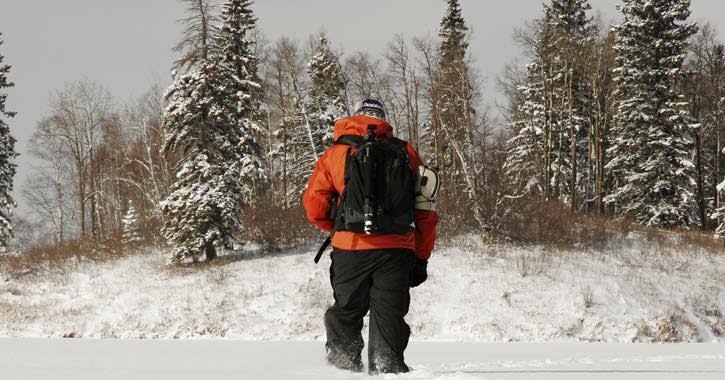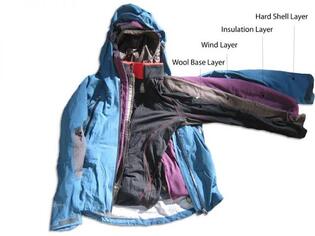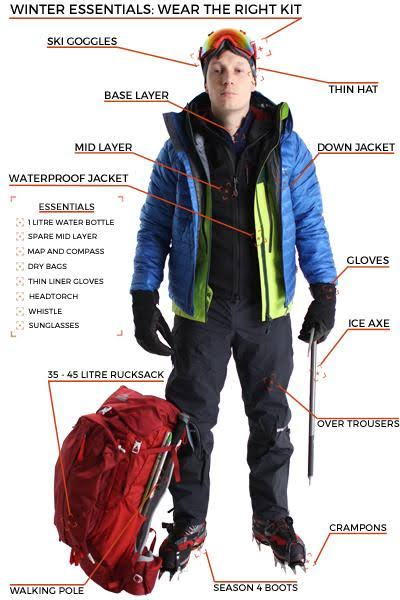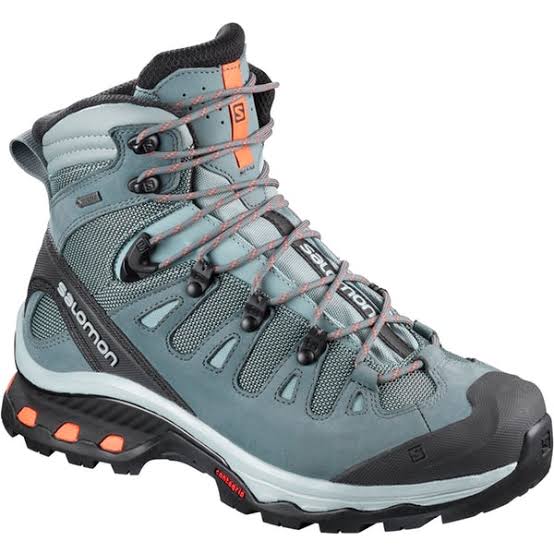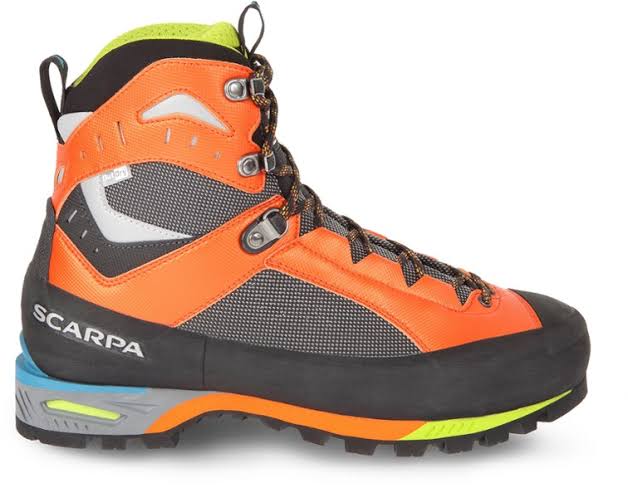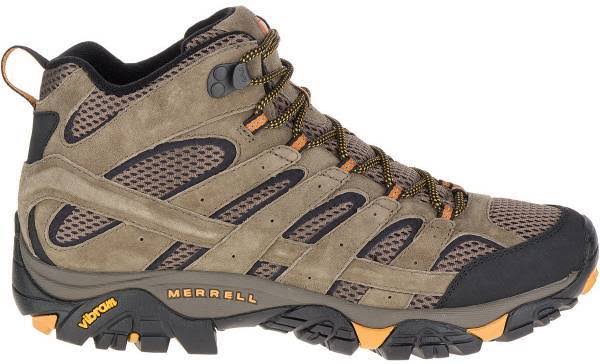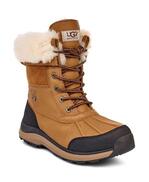Layering
You need to dress for a wide range of activity levels, such as when you are climbing up and generating lots of body heat or when you are at rest and need to bundle up.
The recommended approach for winter dressing is to add clothing layers when you get cold and take off layers when you start to sweat. Sweating should be avoided in winter because wet or damp clothing will chill you when you stop moving. Take off layers if you start to sweat or slow down your pace to generate less body heat.
When starting a winter hike or climb, you'll probably start off wearing too much. We advise people to start off a bit cold, but in reality no one seems to listen and we have to take a break about 15 minutes into the hike so everyone can adjust.
When we take a break for lunch then it's good to have a layer like a puffy jacket or down jacket that you can put on top easily so you don't lose heat during the break.
During our trips we can advise you on which layers might be good, sometimes just a base layer and hard shell are enough.
Important: Do not wear cotton on winter hikes because it takes so long to dry. The same holds for clothing made of wood fibers including modal, rayon, viscose, tencel, and lyocell.
You need to dress for a wide range of activity levels, such as when you are climbing up and generating lots of body heat or when you are at rest and need to bundle up.
The recommended approach for winter dressing is to add clothing layers when you get cold and take off layers when you start to sweat. Sweating should be avoided in winter because wet or damp clothing will chill you when you stop moving. Take off layers if you start to sweat or slow down your pace to generate less body heat.
When starting a winter hike or climb, you'll probably start off wearing too much. We advise people to start off a bit cold, but in reality no one seems to listen and we have to take a break about 15 minutes into the hike so everyone can adjust.
When we take a break for lunch then it's good to have a layer like a puffy jacket or down jacket that you can put on top easily so you don't lose heat during the break.
During our trips we can advise you on which layers might be good, sometimes just a base layer and hard shell are enough.
Important: Do not wear cotton on winter hikes because it takes so long to dry. The same holds for clothing made of wood fibers including modal, rayon, viscose, tencel, and lyocell.
Layering Gear List |
|
Footwear |
Appropriate footwear is probably one of the most important pieces of equipment for winter hiking and mountaineering. If your shoes are insufficient you run the risk of at a minimum being uncomfortable and worst case scenario getting frostbite which can be a serious medical emergency in bad cases.
Because of this we ask all of our participants about their footwear before approving sign-ups. 3 Season Boots 3 season boots are fine for snowshoeing and most winter hiking activities down to about -10C. They need to be high top above the ankles and be waterproof with a Goretex lining. You can increase their waterproof level by regularly cleaning and waxing your boots with an appropriate product for the material type. 3 season boots can take light crampons, but for more technical climbing they are too flexible. Winter Mountaineering Boots Winter mountaineering boots will have have a crampon clip on point on the back and some models have them on the front as well for full auto crampons. These boots will have thicker insulation and will protect your feet from extreme temperatures. They also have a stay running through the sole making them stiff so good for using crampons on rocks and ice. Inappropriate FootwearBoots like the above are not appropriate for our winter adventures. The ventilated hiking boots get wet quickly and do not provide enough warmth and are too flexible to be used with crampons.
The other type of snow boots often sold cheaply online will be okay for short walks in the snowy city environment but have some major problems when it comes to outdoor adventure. They are not breathable so when your feet sweat, it can't evaporate like in a Goretex boot, leading to wet feet, which then become cold frozen feet. Also these type of boots are just too flexible for crampons or snowshoes. **When choosing gear for winter adventures do not go cheap, as your life and toes may depend on it. Choose well established adventure brands and avoid super cheap online products that claim to be good for winter. You really do get what you pay for. |

